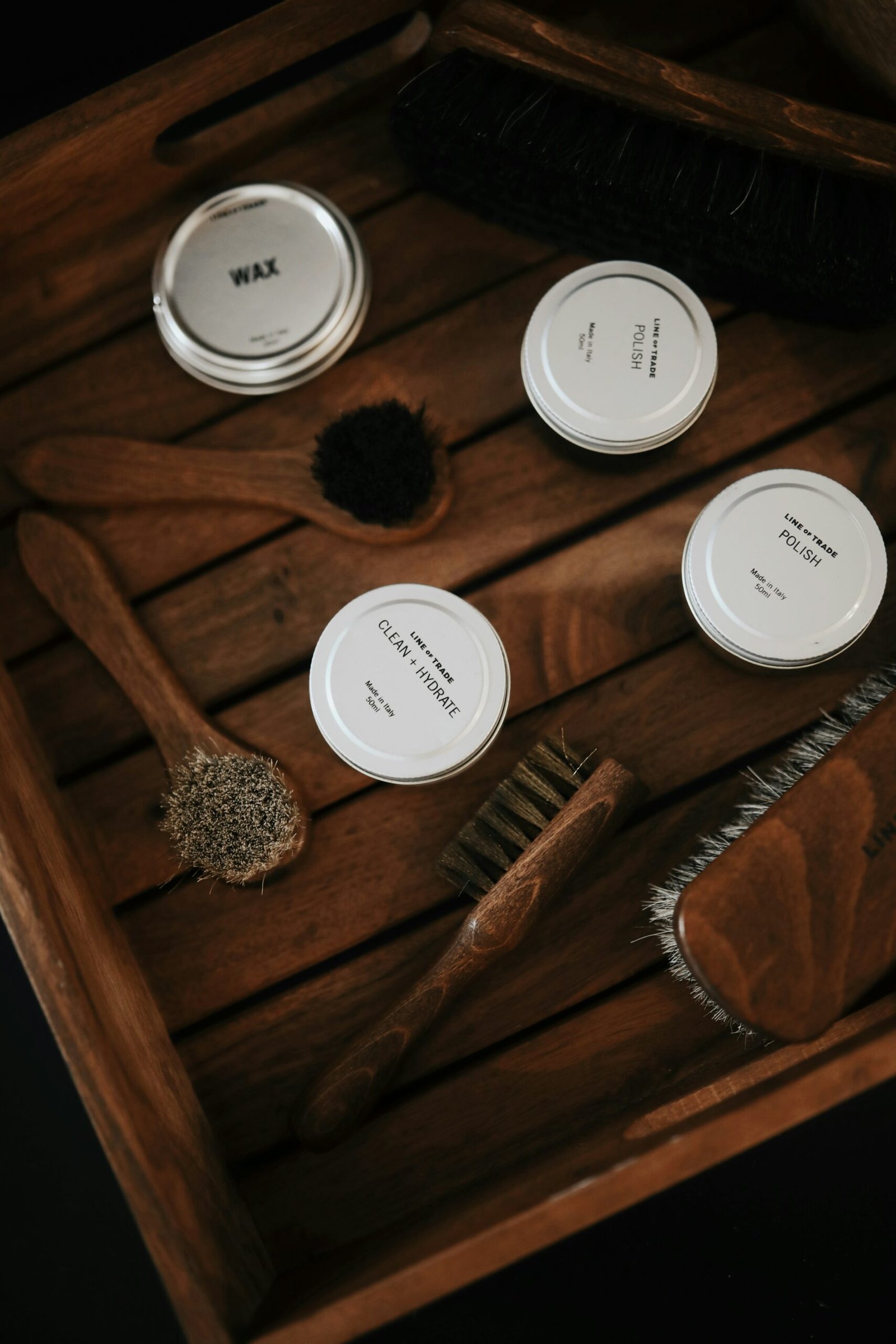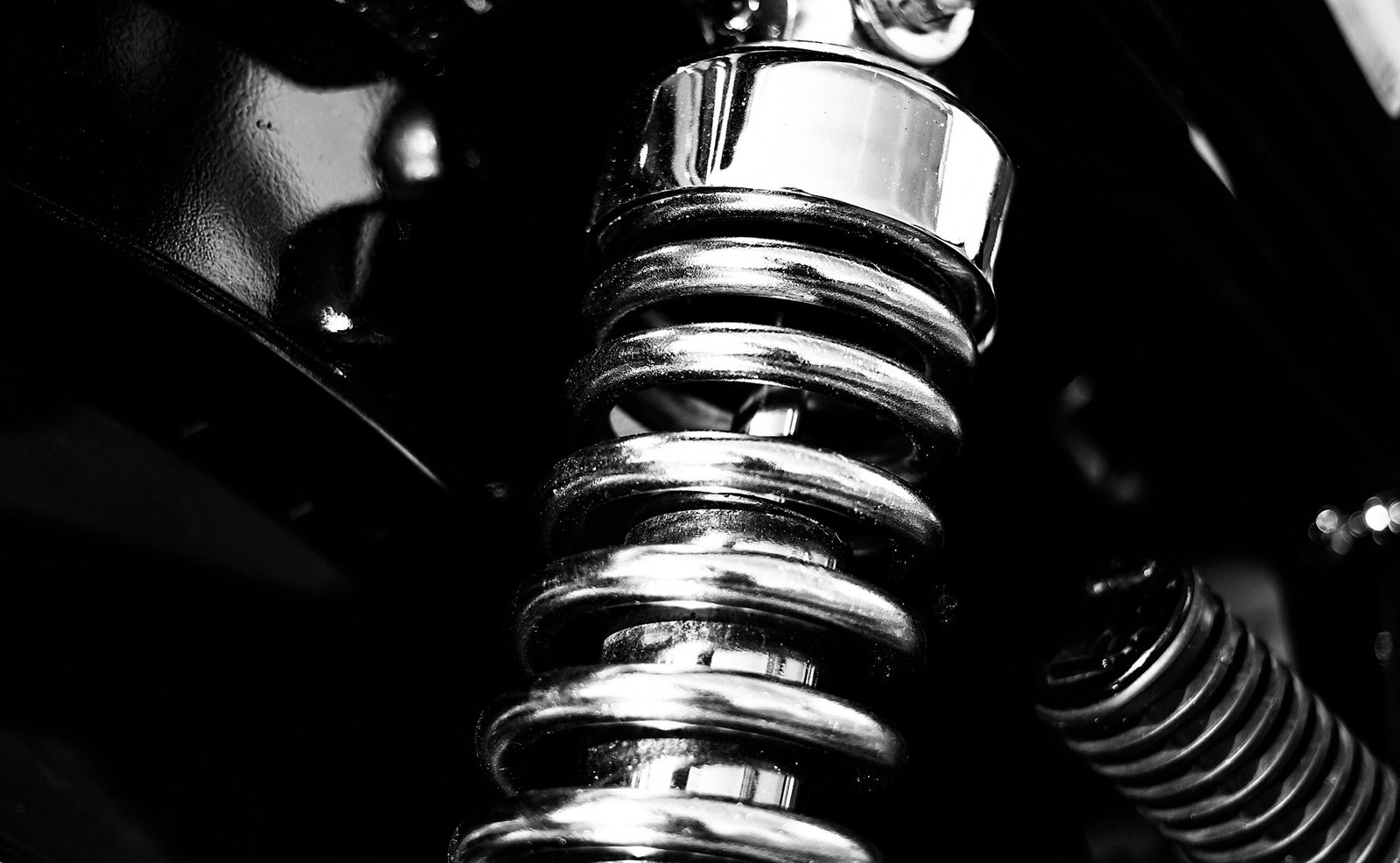Introduction to Leather Seats Maintenance
Leather seats are a popular choice for many vehicle owners due to their luxurious appearance and comfort. However, the aesthetic appeal and longevity of leather can be significantly compromised without proper maintenance. Regular care not only enhances the overall comfort of the vehicle but also ensures that the leather upholstery remains visually appealing. A systematic approach to leather seat maintenance can help prevent common issues such as cracking and fading, which often result from neglect or exposure to harsh environmental conditions.
Over time, leather can dry out, becoming prone to cracks that diminish its texture and beauty. The natural oils present in leather are vital for maintaining its suppleness; however, these oils can be depleted by factors such as sunlight exposure, temperature fluctuations, and inadequate cleaning. Additionally, factors like spills, dirt accumulation, and body oils can contribute to the degradation of leather surfaces. As dirt and particles build up, they can scratch and wear down the protective layer of the leather, accelerating the process of aging.
Moreover, fading is another prevalent concern among leather seat owners. This aesthetic deterioration is primarily caused by prolonged exposure to sunlight, which can strip the leather of its color and luster. Without the implementation of protective measures, such as conditioning and applying products designed to shield against UV rays, the fabric is susceptible to irreversible damage over time.
In the sections that follow, we will delve deeper into effective cleaning methods and protective strategies that can be employed to maintain the integrity of leather seats. By establishing a consistent maintenance routine, vehicle owners can ensure that their leather seats remain in pristine condition, extending their lifespan and preserving their charm.
Understanding Leather Types
When it comes to car interiors, leather is often favored for its luxurious feel and aesthetic appeal. However, it is essential to understand that not all leather is created equal. The variations among different types of leather significantly influence their care and maintenance. The four primary types of leather used in car upholstery include full-grain, top-grain, corrected grain, and bonded leather. Each type possesses unique characteristics that determine how it should be cleaned and protected to prevent issues such as cracking and fading.
Full-grain leather is the highest quality available. It is made from the top layer of the hide and retains the natural grain and imperfections, giving it a unique, rich appearance. This type of leather is durable and develops a beautiful patina over time. To maintain full-grain leather, gentle cleaning with a pH-balanced cleaner is advisable, coupled with regular conditioning to keep it supple.
Top-grain leather is slightly less durable than full-grain but is still a premium choice. It is sanded and refinished to remove imperfections, making it more uniform in texture. While it maintains some breathability, top-grain leather is often coated with a protective finish, making it relatively easier to clean and maintain. Using a soft cloth and mild soap can keep it in good condition.
Corrected grain leather undergoes more substantial processing, involving sanding and stamping to create a uniform look. Although it can be less expensive, it may require specific cleaners designed for corrected leather to avoid potential damage. Lastly, bonded leather consists of leftover leather scraps bonded together with polyurethane; thus, it mimics the look of leather but is less durable. Protecting bonded leather usually involves the use of specialized cleaners to avoid cracking and fading over time.
Essential Cleaning Tools and Products
When it comes to maintaining the integrity and appearance of leather seats, selecting the appropriate cleaning tools and products is paramount. The right equipment not only ensures a thorough cleaning but also safeguards the leather from potential damage that may arise from the use of harsh chemicals or inappropriate techniques.
One of the most vital tools for cleaning leather seats is a soft brush. A soft-bristled brush helps to gently lift dirt and debris from the surface of the leather without causing scratches or scuffs. It is advisable to choose brushes explicitly designed for leather care, as they are less likely to damage the material.
Microfiber cloths are another essential item in your leather cleaning toolkit. Their unique construction allows for effective cleaning while minimizing the risk of irritating the leather’s surface. Microfiber cloths are highly absorbent and can be used both dry and damp, making them versatile for different cleaning tasks. Always opt for a clean, soft microfiber cloth to prevent transferring dirt back onto the leather.
Leather cleaners are specifically formulated to cleanse without detrimental effects. These cleaners vary based on the type of leather—sealed or unsealed—and it is crucial to select one that is compatible with the specific seat material. Look for pH-balanced options that do not contain harsh chemicals, as these can strip the natural oils and protective finish of leather. Additionally, many leather cleaners come in spray bottles, making application easy and consistent.
Finally, a quality leather conditioner is essential. After cleaning, using a conditioner helps to restore moisture, suppleness, and a protective barrier against future wear. By investing in the right tools and products—such as soft brushes, microfiber cloths, appropriate cleaners, and conditioners—one can effectively maintain leather seats and prolong their life, preventing cracking and fading over time.
Step-by-Step Cleaning Process
Maintaining the pristine condition of leather seats is essential to prevent cracking and fading over time. The cleaning process involves several important steps to ensure that dirt and debris are effectively removed without damaging the leather.
Begin by gathering the necessary materials. You will need a vacuum cleaner equipped with a soft brush attachment, a microfiber cloth, a pH-balanced leather cleaner, and a conditioning product specifically designed for leather. Remove any loose items from the seats, including trash and personal belongings, before proceeding.
Use the vacuum cleaner to remove dust, dirt, and debris from the surface of the leather seats. Make sure to pay special attention to seams and crevices, where dirt tends to accumulate. The soft brush will help loosen any stubborn particles without scratching or damaging the leather.
After vacuuming, apply a small amount of the leather cleaner to a clean microfiber cloth. It is crucial to use a designated leather cleaning solution to avoid damage that may be caused by household cleaners. Gently wipe down the surfaces of the seats, working in circular motions to lift and remove any remaining dirt. Avoid applying the cleaner directly to the leather surface, as this can lead to oversaturation.
Once the seats have been thoroughly cleaned, use a separate dry microfiber cloth to buff the surfaces and remove any excess cleaner. This step ensures that no residue is left behind, which could attract more dirt in the future. It is recommended to clean leather seats every three to six months, depending on usage and environmental factors, to maintain their appearance and longevity.
By following this step-by-step cleaning process, you can effectively preserve the integrity and aesthetics of your leather seats, preventing cracking and fading for years to come.
Conditioning Leather Seats: Why It Matters
Conditioning leather seats is an essential aspect of maintaining their appearance and longevity. Leather, a natural material, possesses unique properties that require careful attention to detail. Over time, exposure to sunlight, heat, and regular use can lead to the drying out of leather, resulting in a stiff texture and an increased likelihood of cracking. By incorporating a suitable leather conditioner into your maintenance routine, you can significantly enhance the suppleness of the leather, ensuring it retains its luxurious feel.
Leather conditioners are specially formulated products designed to penetrate the leather’s surface, replenishing the oils and moisture that are depleted over time. This added moisture plays a critical role in preventing the leather from becoming brittle and less elastic. When leather loses its natural oils, it can dry out, causing fading and unsightly cracks. Regular conditioning helps to mitigate these issues, preserving the original beauty and enhancing the durability of the leather seats.
It is essential to differentiate between cleaning and conditioning, as both processes serve distinct purposes in leather care. Cleaning involves the removal of dirt, grime, and stains from the leather surface, ensuring that the material remains visually appealing and hygienic. On the other hand, conditioning focuses on rejuvenating the leather and restoring the essential oils that are vital for maintaining its flexibility and comfort. Utilizing both cleaning and conditioning products in tandem offers comprehensive protection and long-lasting results.
In conclusion, conditioning leather seats is not merely a cosmetic procedure; it is a proactive step toward preserving the integrity of your leather. By preventing drying and reducing the potential for cracking, proper conditioning ensures that your leather seats remain in excellent condition for years to come. Regularly scheduled conditioning will contribute to a more enjoyable experience and maintain the aesthetic value of your vehicle’s interior.
Applying Leather Conditioner: Tips and Techniques
Choosing the appropriate leather conditioner is essential to maintaining the integrity and appearance of leather seats. Look for a high-quality product specifically formulated for your type of leather, ensuring it is free from harmful chemicals and lingering dyes that could potentially damage the material. When in doubt, consult your vehicle’s manual or contact a professional for recommendations tailored to your specific leather type.
Before applying the conditioner, it is prudent to conduct a spot test on an inconspicuous area. This step helps to assess any adverse reactions between the conditioner and the leather, ensuring the product is suitable for your seats. Apply a small amount of conditioner with a soft, lint-free cloth, and observe the area for any discoloration or degradation over 24 hours. Once you have confirmed compatibility, you can proceed with the full application.
To apply the conditioner effectively, start with a clean surface. Use a vacuum or soft brush to remove any dust and debris that may have settled on the seats. Next, take your chosen conditioner and apply a small amount to a clean, dry cloth. Working in small sections, apply the conditioner in a circular motion to ensure even coverage. This technique helps the conditioner penetrate the leather fibers, providing enhanced hydration and protection against cracking and fading.
It is recommended to condition leather seats every six months for optimal results. However, depending on the climate and usage, more frequent conditioning may be necessary. In hotter climates or with heavy usage, assessing the condition of your leather seats every three to four months can prevent premature wear. Following these tips and techniques will help maintain the appearance and extend the lifespan of your leather seats significantly.
Preventing Sun Damage and Fading
Leather seats can greatly enhance the aesthetic appeal and comfort of a vehicle. However, they are susceptible to the damaging effects of direct sunlight. Prolonged exposure to UV rays can lead to fading and cracking, significantly diminishing the quality and appearance of leather interiors. To protect your investment, several preventative measures can be implemented.
One effective strategy is the use of window shades. These shades act as a barrier against direct sunlight, helping to minimize heat buildup and reduce UV exposure inside the vehicle. By employing reflective or tinted window films, you can also significantly limit the amount of sunlight that penetrates into the car. In instances where frequently parked outdoors, consider investing in a good quality car cover that not only keeps dust and debris at bay but also provides an additional layer of protection against harmful UV rays.
Whenever possible, make it a habit to park in shaded areas. Trees or covered parking structures can offer substantial relief from direct sunlight, thereby reducing the risk of sun damage. This proactive approach is particularly beneficial during the peak sun hours when UV radiation is most intense.
Another advantageous measure is the application of UV protectant sprays explicitly designed for leather care. These products create a protective barrier on the leather surface, preventing the fabric from drying out and cracking while also providing resistance against fading. Regular application of UV protectants will ensure the leather maintains its luster over time. Consider integrating such protectants into your regular car maintenance routine to ensure optimal results.
By effectively utilizing these strategies, you can significantly mitigate the risk of sun damage and preserve the quality of your leather seats for years to come.
Dealing with Stains and Spills
Leather seats, while durable and luxurious, are prone to stains and spills that can compromise their integrity if not addressed promptly. Whether navigating daily commutes or family outings, unexpected accidents can lead to unsightly marks on your leather upholstery. Understanding how to effectively handle these incidents is essential for maintaining the appearance and longevity of your seats.
When dealing with ink stains, act quickly by using a cotton swab dampened with rubbing alcohol. Gently blot the stain, avoiding any vigorous rubbing, which may spread the ink further. Always test the alcohol on an inconspicuous area first to prevent damage. For food stains, begin by scraping off any residue with a plastic utensil. Next, create a gentle soap solution by mixing a few drops of mild dish soap with warm water. Dampen a soft cloth with the solution and gently wipe the area clean, followed by another cloth dampened with plain water to remove any soap residue.
Spills from beverages, especially acidic ones like coffee or soda, should be treated with equal urgency. Blot the spill immediately with a clean, dry cloth and avoid rubbing. If the stain persists, use a mixture of water and vinegar in a 1:1 ratio to gently cleanse the affected area. For stubborn stains, specialized leather cleaners are recommended as they are formulated to treat such issues without damaging the material. Always follow the manufacturer’s instructions and conduct a patch test to ensure compatibility with your leather type.
For routine protection against future stains, consider applying a leather conditioner or protectant designed specifically for your upholstery. Regular application will create a barrier against spills and dirt, significantly reducing the risk of stains. By being proactive and responsive, you can preserve the aesthetic appeal of your leather seats and prevent potential damage from stains and spills.
Regular Maintenance Routine for Longevity
Establishing a regular maintenance routine for leather seats is essential to ensure their longevity and preserve their aesthetic appeal. Leather is a natural material that requires dedicated care to prevent issues such as cracking and fading, which can arise due to neglect or exposure to varying environmental conditions. A well-structured schedule for cleaning, conditioning, and inspecting leather seats can significantly extend their lifespan.
It is advisable to clean the leather seats at least once every one to three months, depending on the usage and environmental exposure. Begin the cleaning process by gently vacuuming the seats to remove any dirt and debris trapped in the crevices. Following this, utilize a soft, damp cloth to wipe down the surface, taking care not to oversaturate the leather. For more stubborn grime, a pH-balanced leather cleaner can be employed, ensuring it is applied in a circular motion to maintain the material’s integrity.
After cleaning, conditioning the leather seats is crucial. This should be done every three to six months to keep the leather supple and moisturized. Use a high-quality leather conditioner, applying it according to the manufacturer’s instructions. Conditioning replenishes essential oils that prevent drying out, minimizing the risk of cracks developing over time.
In addition to regular cleaning and conditioning, it is equally important to conduct visual inspections of the leather seats. Look for any signs of wear, fading, or deterioration, and address these issues promptly. This could involve applying specialized products designed to restore color and finish, thereby preventing small problems from escalating into significant damage.
By adhering to this maintenance routine, leather seat owners can ensure their seating remains pristine while avoiding long-term harm. Proactive care not only enhances the appearance of leather but also maintains its value over time.



